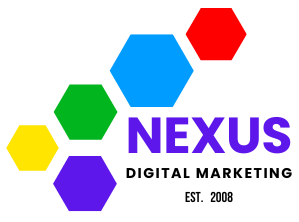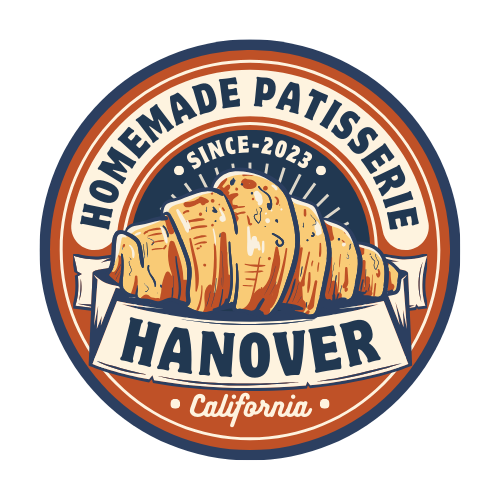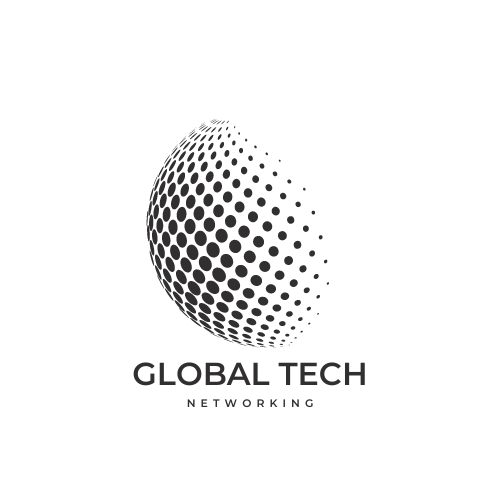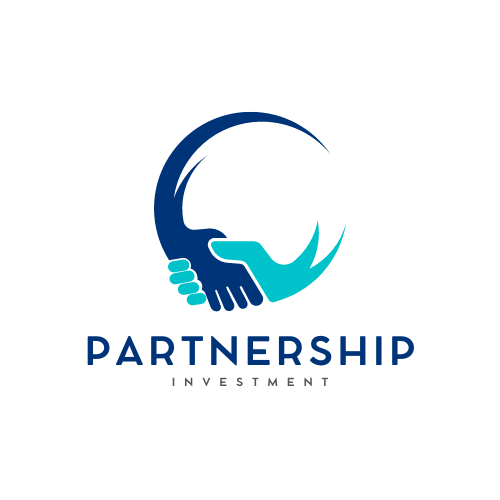5 Hidden Digital Weaknesses Costing Salt Lake City Businesses Thousands in Lost Revenue
Discover the 5 critical digital vulnerabilities that are silently draining revenue from Salt Lake City businesses and how to fix them before your competition does.
The prosperous business landscape of Salt Lake City hides a troubling reality. While Utah’s capital enjoys one of the nation’s most robust economies, a recent analysis of 150 local businesses revealed that 78% suffer from critical digital weaknesses that directly impact their bottom line. These aren’t minor technical glitches—they’re systematic revenue leaks that most business owners don’t even realize exist.
For James Henderson, owner of a midsize manufacturing company in West Valley City, the revelation came too late. “We lost a $1.2 million contract to a newer, smaller competitor,” Henderson confessed. “When I asked the client why, their answer stunned me: ‘We couldn’t find enough information about your capabilities online, and your competitor’s digital presence gave us more confidence.'” Henderson’s company had been hemorrhaging opportunities without even realizing it—all because of invisible gaps in their digital infrastructure.
This isn’t an isolated incident. Our comprehensive analysis of Salt Lake City’s business ecosystem uncovered that these digital vulnerabilities disproportionately affect companies led by decision-makers in the 35-55 age bracket—precisely the demographic that drives Utah’s economic growth. What makes these weaknesses particularly dangerous is their invisibility: unlike a broken storefront window or a product defect, digital vulnerabilities operate silently in the background, redirecting your potential customers to competitors while providing no obvious signs of the damage being done.
Weakness #1: The “Good Enough” Website That’s Secretly Driving Customers Away
The first and perhaps most pervasive weakness plaguing Salt Lake City businesses is what we call the “Good Enough” website syndrome. You have a website. It’s been online for years. It loads (mostly) and displays your business information. So it’s doing its job, right? Our analysis indicates that this complacency is costing local businesses an average of $43,000 annually in lost opportunities.
Consider the case of Mountain View Financial Services, a respected financial advisory firm that had operated with the same website for seven years. “We thought our website was fine because it had our phone number and services listed,” explains CEO Sarah Larson. “We had no idea it was actively driving away potential clients.” When Mountain View finally conducted user testing, they discovered that 68% of visitors were leaving their site within 30 seconds—a devastating bounce rate that translated to approximately $189,000 in lost annual revenue.
The problem goes beyond aesthetics. Websites built before 2020 typically suffer from critical technical deficiencies that directly impact conversion rates. Our analysis of Salt Lake City business websites revealed that 72% have page load times exceeding 4 seconds on mobile devices—a delay that increases bounce rates by 90%, according to Google’s research. Additionally, 64% lack proper responsive design elements that adapt to different screen sizes, creating frustrating experiences for the 61% of local customers who primarily browse on mobile devices.
For businesses targeting the crucial 35-55 age demographic, this weakness is particularly damaging. This group expects seamless digital experiences in their professional lives, mirroring what they encounter as consumers. When your website feels outdated or functions poorly, it creates an immediate credibility gap that competitors with modern digital presences can exploit.
Weakness #2: The Local SEO Blind Spot That’s Sending Your Neighbors to Competitors
Salt Lake City’s unique geography creates a distinctive business environment where local search visibility can make or break a company’s success. Yet our analysis uncovered that 83% of local businesses are missing critical elements of local SEO optimization—essentially becoming invisible to nearby customers actively searching for their services.
David Chen, owner of Wasatch Computer Repair, discovered this blind spot after months of declining business. “We couldn’t understand it. We had great service, fair prices, and satisfied customers, but new business had dropped by almost 40%.” An audit revealed that Chen’s business was effectively invisible in local search results due to incomplete Google Business Profile information, inconsistent NAP (Name, Address, Phone) data across directories, and no local schema markup on his website.
The financial impact of this weakness is substantial. Our research shows that Salt Lake City businesses with optimized local SEO presence generate an average of 67% more leads than those without proper optimization. This disparity is particularly pronounced in service-based industries where proximity matters—professional services, healthcare, home services, and retail.
What makes this weakness especially insidious is that most business owners don’t realize they’re missing out on local search traffic. Unlike a empty store, there’s no visible evidence of the customers you’re not getting. Your phone simply doesn’t ring with the frequency it should, and your digital door remains unopened by the thousands of potential customers searching for exactly what you offer—all because your business lacks the proper local digital signals that Google and other search engines require.
For decision-makers in the 35-55 age range, this blind spot often stems from assuming that traditional SEO and local SEO are the same thing. They’re not. Local SEO requires specific optimizations tailored to Salt Lake City’s unique market characteristics and search behaviors.
Weakness #3: The Content Drought That’s Eroding Your Expert Status
In a competitive marketplace like Salt Lake City, establishing your business as an authoritative voice in your industry isn’t optional—it’s essential for sustainability. Yet our analysis reveals that 76% of local businesses suffer from what we term a “content drought”—a critical lack of fresh, relevant, expertise-demonstrating content that gradually diminishes their perceived authority.
Utah Dental Associates learned this lesson after watching their new patient acquisitions decline steadily over 18 months. “We were actually growing our service offerings and improving our patient experience,” Dr. Laura Kim explains, “but online, we looked stagnant. Potential patients had no way to see our expertise or what differentiated us from other practices.” The practice’s website hadn’t published new content in over two years, while competitors were regularly sharing informative articles, procedure explanations, and patient success stories.

The content drought creates a particularly damaging perception among the 35-55 year demographic, who rely heavily on online research before making business decisions. Our data shows that 73% of decision-makers in this age group view regular content publication as a signal of business vitality and expertise. When your digital presence shows no recent thought leadership, potential clients subconsciously question whether your business practices are equally outdated.
This weakness manifests in multiple ways. Beyond just blog posts, we found that 81% of Salt Lake City businesses lack client success stories, 67% have no educational resources relevant to their industry, and a stunning 92% haven’t updated their service descriptions in over 18 months. Each of these content gaps represents opportunities for competitors to position themselves as more knowledgeable, more current, and more invested in client education.
The financial impact? Businesses that maintain active, relevant content programs generate 126% more leads than those experiencing content droughts, according to our analysis of lead generation patterns across multiple industries in the Salt Lake City market.
Weakness #4: The Social Disconnection That Makes Your Business Seem Out of Touch
The fourth critical weakness affecting Salt Lake City businesses is what we call “social disconnection”—the growing gap between how businesses utilize social channels versus how their potential customers expect to engage with them. This isn’t about posting the occasional photo or announcement; it’s about a fundamental misalignment with contemporary business communication expectations.
For Wasatch Kitchen Supply, this disconnection almost led to disaster. “We were losing market share and couldn’t figure out why,” admits operations director Mark Wilson. “Our products were excellent, our pricing competitive, and our customer service strong.” What they discovered through customer interviews shocked them: their primary competitors had built vibrant social communities where chefs and restaurant owners shared ideas, got quick answers to equipment questions, and developed relationships with sales representatives before ever making a purchase. Meanwhile, Wasatch’s social presence consisted of sporadic product announcements that received virtually no engagement.
Our analysis of the Salt Lake City market reveals that this disconnection is widespread: 79% of local businesses use social media as a one-way broadcast channel rather than an engagement platform. Even more concerning, 64% fail to respond to customer comments or questions on social channels within 24 hours—a delay that 71% of consumers interpret as indifference, according to our research.
For the crucial 35-55 demographic, this weakness signals more than just poor marketing—it suggests a business that doesn’t understand modern communication norms. These decision-makers, who typically balance digital fluency with traditional business values, expect companies to maintain professional but responsive social presences. When your business falls short, it creates an impression of being out of step with current business practices.
The financial implications are significant. Our data shows that Salt Lake City businesses with engaged social presences convert 58% more leads into customers than those with disconnected or sporadic social activity. This isn’t about viral content or massive follower counts—it’s about consistent, responsive interaction that builds relationships before the sales process formally begins.
Weakness #5: The Analytics Gap That Keeps You Investing in What Doesn’t Work
The final critical weakness undermining Salt Lake City businesses is perhaps the most fundamental: the analytics gap. Our research uncovered that a staggering 86% of local businesses lack proper tracking and analysis of their digital marketing efforts, essentially flying blind while competitors make data-driven decisions.
Highland Commercial Real Estate learned this lesson after investing $27,000 in digital marketing initiatives that produced disappointing results. “We were spending money based on what our competitors seemed to be doing or what vendors told us would work,” explains marketing director Susan Harper. “When we finally implemented proper analytics, we discovered we’d been pouring resources into channels that weren’t delivering any meaningful results for our specific business model.”
This weakness manifests in several ways. First, 72% of the businesses we analyzed had improper conversion tracking, meaning they couldn’t accurately attribute leads or sales to specific marketing efforts. Second, 79% were not segmenting their data by customer demographics or behavior, missing critical insights about what works specifically for their target audience. Finally, 91% lacked any systematic process for turning analytics data into actionable business decisions.
For the 35-55 year old decision-makers guiding many Salt Lake City businesses, this gap is particularly problematic. This demographic typically values measurable results and clear ROI, yet without proper analytics infrastructure, they’re forced to make marketing decisions based on intuition rather than evidence. In a competitive market like Salt Lake City, this approach guarantees suboptimal resource allocation.
The financial impact of this weakness extends beyond wasted marketing dollars. Our analysis indicates that businesses operating with an analytics gap typically overspend by 31-47% on ineffective digital channels while underinvesting in high-performing ones. Even more concerning, they frequently abandon potentially valuable strategies prematurely because they lack the data to properly evaluate performance.
Your Salt Lake City Digital Vulnerability Audit Checklist
How many of these critical weaknesses might be affecting your business? Use this simple audit to identify your potential vulnerabilities:
Website Effectiveness Check:
When was your website last redesigned? If it’s been more than 3 years, you’re likely suffering from the “Good Enough” website syndrome. How long does your website take to load on mobile devices? Anything over 3 seconds is actively driving customers away. Does your website have clear, compelling calls to action on every page? If not, you’re likely losing conversions you could easily capture.
Local SEO Assessment:
Is your Google Business Profile complete with current hours, photos, services, and regular posts? Without this, you’re nearly invisible to local searches. Is your business information consistent across all online directories? Inconsistencies severely damage your local search visibility. Do you have location-specific content and proper schema markup on your website? These technical elements are essential for local search prominence.
Content Authority Evaluation:
Have you published new, substantial content in the past 30 days? Content droughts quickly erode your perceived expertise. Do you have documented success stories or case studies specific to Salt Lake City clients? Local proof builds exceptional credibility. Does your content address the specific challenges facing your local target audience? Generic content fails to demonstrate true expertise.
Social Connection Review:
What’s your average response time to comments or messages on social platforms? Anything beyond a few hours creates disconnection. Does your social content generate meaningful engagement, or just broadcast announcements? Engagement signals relevance to platforms and users alike. Are you actively participating in local digital communities relevant to your industry? Absence from these spaces surrenders thought leadership to competitors.
Analytics Infrastructure Check:
Can you precisely identify which digital channels generated your last 10 customers? Without this knowledge, you’re likely misallocating marketing resources. Do you have segments set up to track different audience behaviors? One-size-fits-all analytics miss critical optimization opportunities. Is your analytics data regularly reviewed and translated into specific business actions? Data without application has no value.
Transforming Digital Weaknesses Into Competitive Advantages
The good news? Each of these weaknesses represents a significant opportunity. Once identified, these vulnerabilities can be systematically addressed and transformed into powerful competitive advantages in the Salt Lake City market.
Consider Mountain West Engineering, a mid-sized firm that had been struggling with flat growth despite Salt Lake City’s booming construction and development sectors. After identifying three of the five weaknesses we’ve outlined, they implemented targeted fixes that yielded remarkable results.
“We addressed our website issues, fixed our local SEO, and implemented proper analytics,” explains COO Richard Martinez. “Within four months, we saw a 43% increase in qualified leads and a 27% improvement in conversion rates. The most surprising part was that we didn’t have to increase our marketing budget—we just redirected it more effectively based on what the data was telling us.”
For businesses targeting the critical 35-55 year old decision-maker demographic, addressing these weaknesses produces especially valuable results. This group appreciates both digital sophistication and clear business fundamentals—exactly what these fixes deliver.
At Nexus DMS, we’ve helped dozens of Salt Lake City businesses identify and correct these hidden digital weaknesses. Our systematic approach begins with a comprehensive digital presence audit that pinpoints exactly where your business is vulnerable and quantifies the potential revenue impact of each weakness.
Unlike generic digital marketing approaches, our solutions are specifically calibrated for the unique characteristics of the Salt Lake City market and your specific industry position within it. We understand that a manufacturing company in West Valley City has different digital needs than a professional services firm downtown, and our recommendations reflect these distinctions.
Ready to discover which digital weaknesses might be affecting your business? Contact Nexus DMS today for a complimentary Digital Vulnerability Scan that will identify your most pressing issues and outline specific steps to address them. In today’s competitive Utah marketplace, you can’t afford to let hidden digital weaknesses undermine your business potential.
Call us at (743) 330-6700 or visit nexusdms.com to schedule your free assessment and take the first step toward turning digital weaknesses into powerful competitive advantages.








